Aquaponics has revolutionized the way we approach sustainable farming, and one fascinating aspect within this realm is the integration of crayfish. In this article, we’ll explore the intriguing world of crayfish aquaponics, delving into the symbiotic relationship between these crustaceans and aquatic plants.
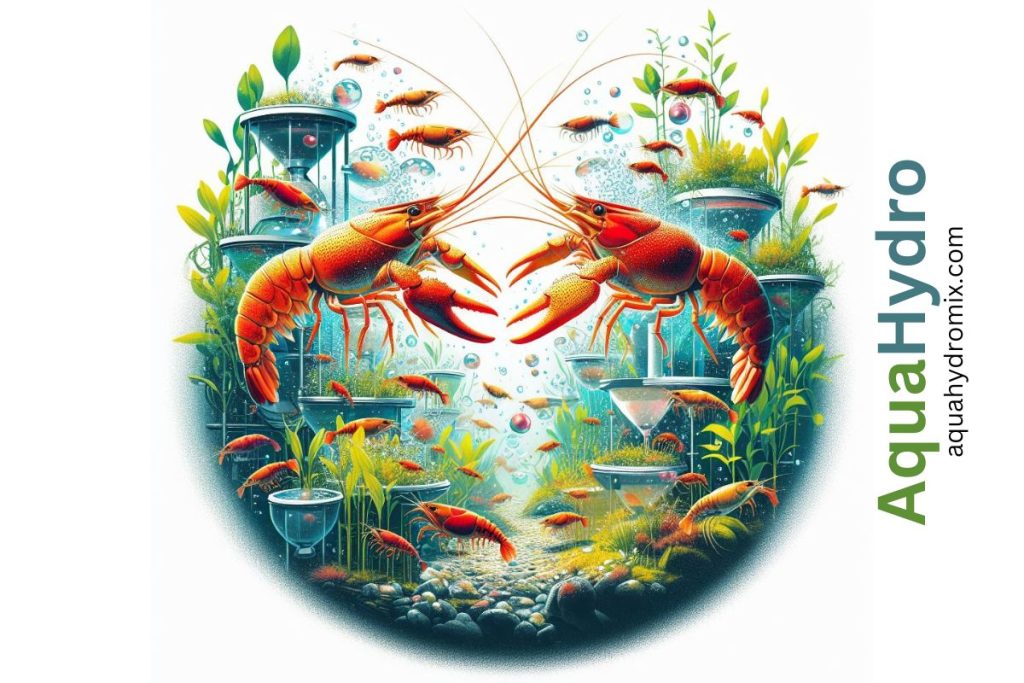
Understanding Crayfish in Aquaponics
The Role of Crayfish
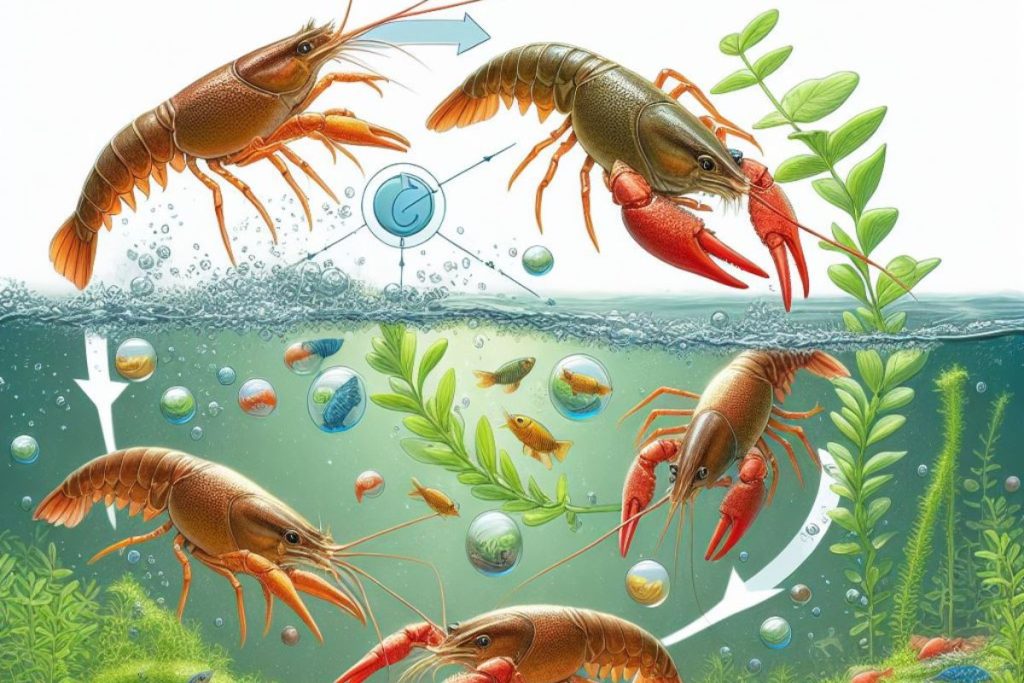
In crayfish aquaponics, these crustaceans assume a crucial role in maintaining a balanced ecosystem. They actively contribute to nutrient cycling, playing a vital part in the recycling of essential elements within the aquaponic system. By consuming and digesting organic matter, crayfish release nutrients into the water through their waste. This process enhances the overall nutrient content, fostering an environment conducive to the growth of aquatic plants.
Moreover, crayfish add a layer of complexity to the aquaponic system. Their activities, such as scavenging for food and creating shelter, contribute to the dynamic interactions within the ecosystem. This complexity is beneficial as it mirrors natural aquatic environments, promoting a more resilient and self-sustaining system.
Species Selection
Choosing the right species of crayfish is a pivotal decision that significantly influences the success of the aquaponics setup. Several factors must be carefully considered during the selection process:
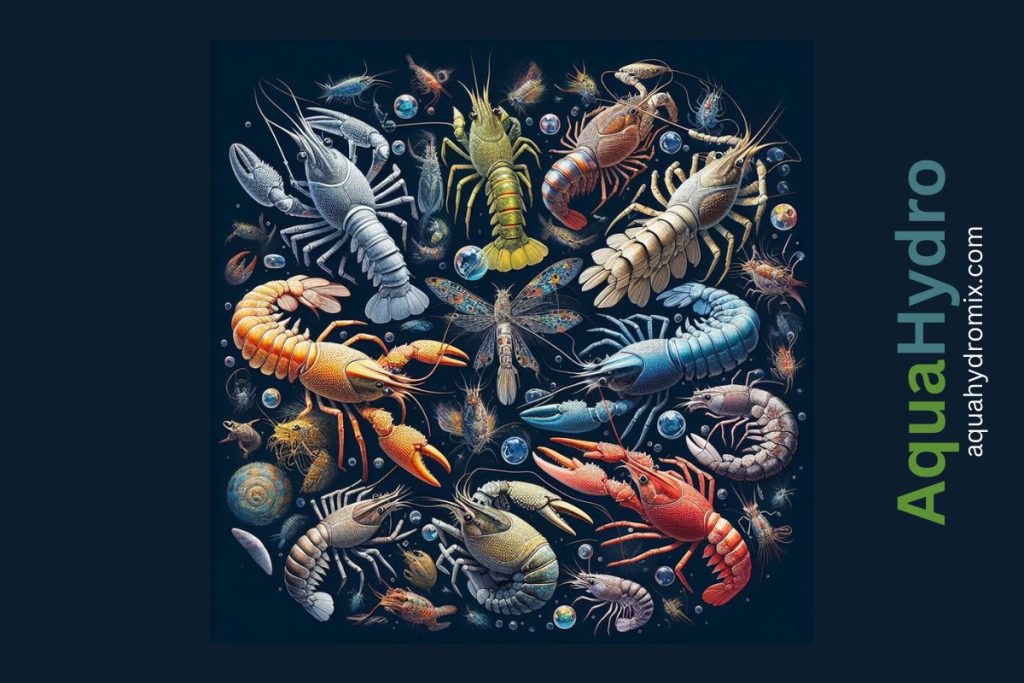
- Size
The size of the chosen crayfish species is critical as it impacts the available space within the aquaponic system. Ensuring compatibility with the tank size and the other inhabitants is essential for a harmonious environment.
- Behavior
Understanding the behavior of crayfish species is crucial for maintaining a balanced ecosystem. Some crayfish are more aggressive, while others are more docile. Compatibility with other aquatic life, especially in a closed system, is vital for overall system health.
- Compatibility with Plants
Different crayfish species may exhibit varying levels of compatibility with aquatic plants. Some species may have a preference for certain types of vegetation, while others may be less selective. Careful consideration of plant-crayfish compatibility ensures optimal conditions for both.
The combined assessment of these factors ensures a thoughtful and informed approach to crayfish species selection. By considering size, behavior, and compatibility with plants, aquaponics enthusiasts can create an environment that maximizes the benefits of crayfish within the system while minimizing potential conflicts.
Setting Up Your Crayfish Aquaponics System
Tank Design
Creating an ideal environment for crayfish is a foundational step in crayfish aquaponics, and it starts with designing a suitable tank. Here are the key considerations in tank design:
- Size and Space
Selecting an appropriate tank size is crucial. It should provide enough space for crayfish to move comfortably while accommodating the overall system’s size. Adequate space also ensures that crayfish can establish territories without overcrowding issues.
- Hiding Places
Incorporating hiding places within the tank is essential for crayfish well-being. Crayfish often seek shelter, especially during molting or when feeling threatened. Rocks, caves, or artificial structures can serve as hiding spots, contributing to their overall comfort and security.
- Substrate
Choosing an appropriate substrate is important. Substrates like gravel or sand mimic natural environments and provide surfaces for beneficial bacteria to colonize, aiding in biological filtration.
- Water Flow
Establishing a proper water flow is critical. Crayfish thrive in well-aerated water, and a gentle current helps distribute nutrients and oxygen. However, the flow should not be too strong, as crayfish may struggle to navigate or molt in overly turbulent conditions.
Water Quality Management
Maintaining optimal water quality is a fundamental aspect of crayfish aquaponics. Consider the following factors in water quality management:
- Filtration Systems
Implementing effective filtration systems is key to removing impurities and maintaining water clarity. Mechanical filters remove debris, while biological filters break down ammonia and nitrites, ensuring a healthy environment for crayfish and plants.
- Water Testing
Regular water testing is essential for monitoring crucial parameters such as pH, ammonia, nitrite, and nitrate levels. Consistent testing allows for timely adjustments and ensures that water conditions remain within the optimal range for both crayfish and plants.
- Strategies for Water Conditions
Developing strategies to keep water conditions conducive involves practices such as partial water changes, substrate cleaning, and algae control. These actions contribute to the overall health of the aquaponic system, supporting the well-being of both crayfish and plants.
Crayfish and Plant Interaction

Nutrient Exchange
Understanding how crayfish waste serves as a nutrient source for plants is fundamental to the symbiotic relationship in crayfish aquaponics. Here’s a breakdown:
- Nitrogen Cycle Contribution
Crayfish play a vital role in the nitrogen cycle within the aquaponic system. Through their natural activities, crayfish produce waste rich in ammonia. This waste, in turn, undergoes a biological process where beneficial bacteria convert ammonia into nitrites and then into nitrates.
- Fostering a Nutrient-Rich Environment
The nitrates produced through crayfish waste serve as valuable nutrients for plants. In the aquaponic system, plants absorb these nitrates as a nutrient source for growth. This nutrient exchange creates a symbiotic relationship where crayfish contribute to a nutrient-rich environment that supports the flourishing of aquatic plants.
Plant Selection
Certain plants thrive in crayfish aquaponics systems, benefiting from crayfish waste. Here’s a breakdown of plant selection:
- Nitrate-Loving Plants
Plants that thrive in nitrogen-rich environments are well-suited for crayfish aquaponics. Leafy greens such as lettuce, kale, and spinach, along with herbs like basil, are excellent choices. These plants have adapted to absorb nutrients efficiently from the water, utilizing the nitrates produced by crayfish waste.
- Compatibility Factors
Understanding compatibility factors is crucial for promoting a harmonious coexistence between crayfish and plants. Considerations include the tolerance of plants to crayfish behavior, such as occasional nibbling or disturbance of roots. Choosing plants that can withstand these interactions ensures a balanced ecosystem.
- Diversity in Plant Species
Promoting diversity in plant species contributes to the overall health of the aquaponic system. Different plants have varying nutrient requirements, and a diverse selection ensures that a broader range of nutrients from crayfish waste is utilized.
Challenges and Solutions
Disease Management
Addressing common challenges related to crayfish health and implementing strategies to prevent diseases is crucial for the success of your aquaponics venture. Here’s a detailed breakdown:
- Disease Identification
Identifying common diseases affecting crayfish is the first step. Diseases may include shell rot, fungal infections, or bacterial diseases. Regular observation and monitoring of crayfish behavior, appearance, and shell condition are essential for early detection.
- Quarantine Procedures
Implementing quarantine procedures for new crayfish additions can prevent the introduction of diseases into the aquaponic system. This involves isolating new crayfish for a specified period and closely observing them for signs of illness before introducing them to the main system.
- Water Quality Management
Ensuring ideal water quality is essential to prevent the onset of diseases. Clean, well-filtered water helps reduce stress on crayfish, making them less susceptible to illnesses. Regular water testing and filtration system maintenance are essential components of disease prevention.
- Treatment Options
In the event of disease outbreaks, having a well-defined treatment plan is crucial. Treatment options may include introducing natural remedies, adjusting water parameters, or, in severe cases, isolating affected crayfish for specialized care.
Balancing Act
Exploring the delicate balance required in crayfish aquaponics involves managing the needs of both crayfish and plants. Here’s a detailed breakdown:
- Feeding Schedules
Establishing balanced feeding schedules is essential. Overfeeding can lead to excess waste production, affecting water quality and potentially harming crayfish and plants. Conversely, underfeeding may deprive both of essential nutrients. Finding the right balance ensures the well-being of all components in the system.
- Population Control
Managing the crayfish population is crucial for maintaining a balanced ecosystem. Crayfish reproduce prolifically, and without proper control, overpopulation can lead to competition for resources, aggression, and compromised water quality. Implementing strategies for population control, such as culling or separating genders, helps maintain a harmonious balance.
- Observation and Adjustment
Regular observation of the aquaponic system is key. Adjustments to feeding schedules, population control measures, and other factors should be made based on observations of crayfish behavior, plant health, and water quality. Flexibility and responsiveness to changes contribute to the ongoing balance in the system.
Success Stories: Real-world Experiences
Case Studies
Highlighting successful crayfish aquaponics setups worldwide involves exploring real-world experiences and lessons learned. Here’s a detailed breakdown:
- Geographic Diversity
Explore successful setups in different geographic locations. Highlight how enthusiasts in various climates and environments have adapted their crayfish aquaponics systems to local conditions. Consider factors like temperature, water hardness, and seasonal variations.
- Species Specifics
Detail case studies based on the specific crayfish species used in different setups. Examine how the choice of species influenced the overall success of the aquaponic system, considering factors like growth rates, breeding behavior, and adaptability to the environment.
- Innovative Approaches
Showcase unique and innovative approaches enthusiasts have taken in designing and managing their crayfish aquaponics systems. This may include unconventional tank designs, integration with other farming practices, or the use of technology for monitoring and control.
- Lessons Learned
Discuss the lessons learned from these real-world experiences. Enthusiasts often encounter challenges and find creative solutions. By sharing these experiences, the aquaponics community can benefit from the collective wisdom gained over time.
- Sustainability Impact
Examine the sustainability impact of successful crayfish aquaponics setups. Highlight instances where enthusiasts have achieved sustainable practices, reduced environmental impact, or even contributed positively to local ecosystems.
- Community Engagement
Explore cases where crayfish aquaponics has become a focal point for community engagement. This may involve educational initiatives, local partnerships, or collaborative efforts that extend beyond individual setups.
- Future Prospects
Consider how these success stories pave the way for future developments in crayfish aquaponics. Discuss the potential scalability of certain approaches and how these experiences contribute to the growth and evolution of the aquaponics field.
Future Trends in Crayfish Aquaponics
Technological Advancements
Exploring future trends in crayfish aquaponics involves examining emerging technologies that shape the field. Here’s a brief breakdown:
- Automated Monitoring Systems
Explore the integration of automated monitoring systems in crayfish aquaponics. These systems offer real-time data on water quality, crayfish behavior, and overall system performance, enhancing precision and efficiency.
- Innovative Tank Designs
Examine advancements in tank designs that contribute to the efficiency and sustainability of crayfish aquaponics. This may include modular and space-efficient tank structures, as well as designs that optimize water circulation and nutrient distribution.
- Precision Feeding Technologies
Explore technologies that enable precise and automated feeding. This could involve the use of sensors, smart algorithms, or even robotic feeders to deliver the right amount of food at optimal intervals, improving resource utilization and minimizing waste.
- Water Treatment Innovations
Examine emerging water treatment technologies that enhance the quality of water in crayfish aquaponics systems. These innovations may include advanced filtration methods, biological treatment solutions, and sustainable approaches to water purification.
- Integration of IoT (Internet of Things)
Explore how the Internet of Things (IoT) is being integrated into crayfish aquaponics. IoT technologies enable remote monitoring, control, and data analysis, allowing enthusiasts to manage their systems more effectively and make informed decisions based on real-time information.
- Sustainable Practices
Highlight technological advancements that contribute to the overall sustainability of crayfish aquaponics. This may include energy-efficient systems, eco-friendly materials, and practices that minimize environmental impact.
- Research and Development
Discuss ongoing research and development efforts in the field of crayfish aquaponics. This involves collaborations between scientists, engineers, and aquaponics enthusiasts to continually push the boundaries of knowledge and innovation.
Environmental Impact
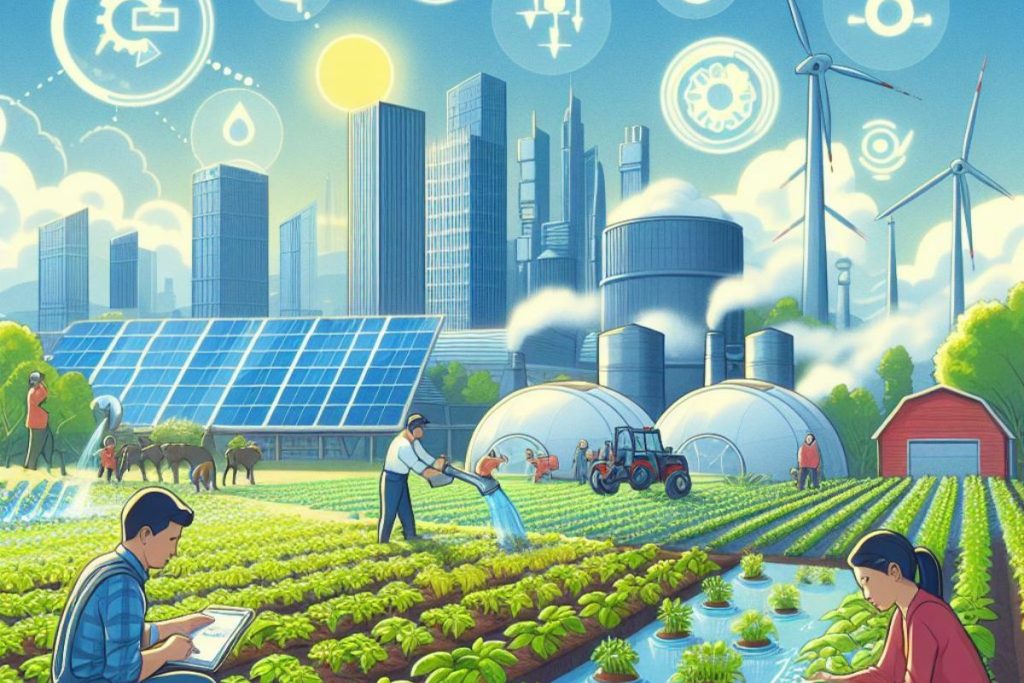
Sustainability Benefits
Discussing the environmental impact of crayfish aquaponics includes highlighting its sustainability benefits:
- Reduced Water Usage
Crayfish aquaponics contributes to water conservation by optimizing water use within the system, minimizing waste, and promoting efficient nutrient cycling.
- Minimal Environmental Impact
Emphasize the low environmental footprint of crayfish aquaponics, showcasing how it reduces the need for external inputs, such as synthetic fertilizers, and mitigates potential harm to surrounding ecosystems.
- Urban Food Growth Potential
Explore how crayfish aquaponics offers the potential to grow food in urban settings, providing fresh produce locally and reducing the environmental costs associated with transportation and distribution.
In conclusion, crayfish aquaponics offers a sustainable and innovative approach to farming. The symbiotic relationship between crayfish and plants creates a self-sustaining ecosystem that benefits both aquatic life and plant growth. As we look to the future, the integration of technology and a deeper understanding of these relationships will undoubtedly drive further advancements in this exciting field.
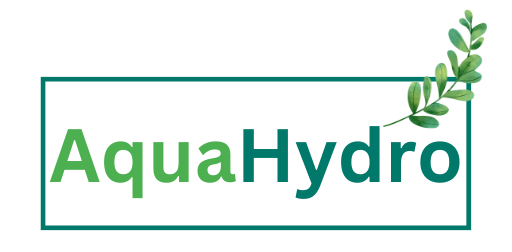

1 thought on “Crayfish Aquaponics: A Deep Dive into the Symbiotic World of Aquaculture”